FOUNDATIONS REVEALED COMPETITION ENTRY

The Emperor’s Forger
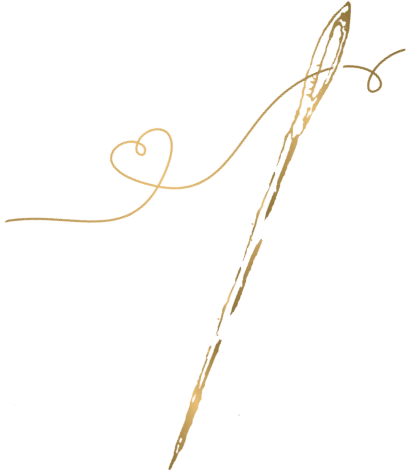
Outline the story …
In Brandon Sanderson’s award winning novella The Emperor’s Soul, Shai, a Forger, has to take on the ultimate challenge: Forge the soul of a person, the emperor no less. Forgery is a magic where, with the carving and stamping of a stamp, objects can be transformed into different forms. The author was heavily inspired by the artifacts he saw in a trip to Taiwan’s National Palace Museum, which just happens to be located in my hometown. Thus, the whole book, although set in a fantasy world, is colored with Chinese culture and tradition.
Rarely in English literature do I find a protagonist who is so similar to me: East Asian, bespectacled, long black hair, and also loves art and research. Thus, I decided to use traditional Chinese clothing worn in Taiwan during the late Qing Dynasty (1860s-1910s) as my base. In cut and form, my entry resembles a 大襟衫(dajinshan), but the colors and embellishments are completely fanciful. The color palette deviates from the standard of the era, but is nonetheless still inspired by a set of Qing books I saw at the National Palace Museum myself.
In the novella, Shai spends a good chunk of her imprisonment making her prison room more beautiful and comfortable; I like to think that this is a garment worthy of her--practical, but unique and with her own aesthetic twist. As if, with a twist of her magic stamp, a twisting vine and peony have been brought to life on the garment.
Outline the construction…
The pattern for this dajinshan was collated from over a dozen extant garments I had the privilege of examining over the course of my studies in grad school. These garments were worn by every woman, and distinctions of class and wealth were made by fabric choice and the embellishments lavished, not by the cut. I painstakingly measured and inspected the inside details and seam finishes of the extant robes to puzzle out their construction.
I chose to make this dajinshan in a sensible cotton/linen blend fabric, similar to those on the extants. This results in a garment that is comfortable and also hardy enough for everyday wear. I chose to do fabric applique decorations around the collar, in the pattern of a vine sprouting from a peony, which symbolizes riches and honor. Extant robes from the Qing dynasty often feature bands of trim or rouleau going around the collar, so the winding vine motif is but a slightly fanciful addition. All hand-stitched, of course.
Traditional Chinese garments are very different in terms of construction from their Western counterparts, as they focus not so much on hugging the figure, as they're roomy, but on the meticulous hand-finished details. This took me as much, if not even more, time to make than my previous FR contest entries, and definitely required much more hand-sewing. I had to learn how to make my own wheatpaste to stiffen the bias strips used for the buttons, for example.

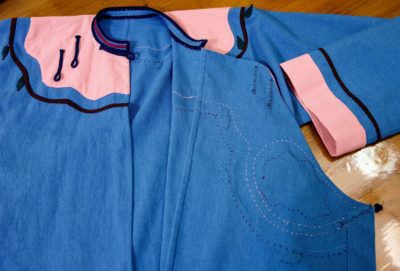
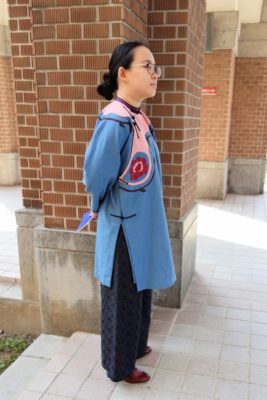
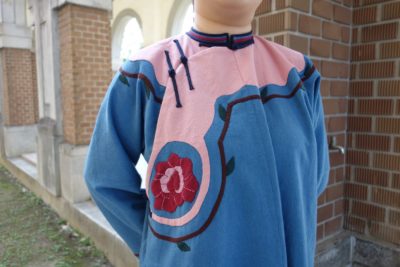
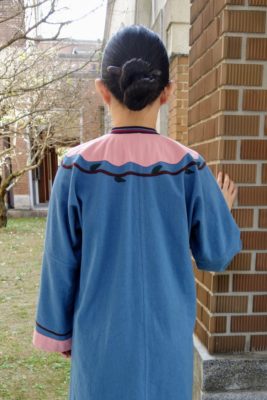
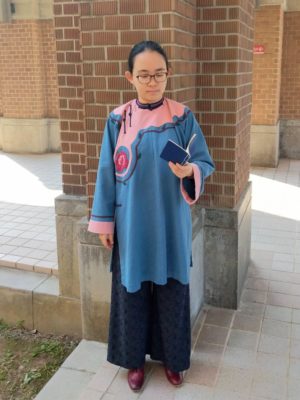

This is beautiful! Thank you for the education and for adding a book to my reading list. Shai sounds like an amazing character I would love to get to know and it is so great to see historical and traditional garments from other cultures.
Oh wow, the garment is gorgeous, as is the incredible attention to detail! I absolutely adored reading The Emperor’s Soul, and seeing a garment based off of the story and off of the historical and traditional influences of the story, is just so absolutely incredible.
I love how the vine wraps around your shoulders. Thanks for introducing me to the dajinshan, and well done!
Wow! This is amazing! You did such a great job with it!
The detail stitching is impeccable!
I would just love to see like 30-40 more photos from ev-e-ry angle. So pretty!
Ohhh I haven’t gotten around to read this novella just yet, so I can’t read the outline 😅 But looking at your photos make me super excited about reading it, the sooner the better!! Great colour combinations, and the vine reaching around is really cute. Well done <3